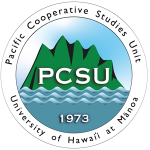EXECUTIVE SUMMARY
This plan lays out a proposed ten-year strategy for the eradication of coqui frogs from Maui. Without a significant and sustained increase in efforts, the vision of a coqui-free Maui will become impossible. If coqui are allowed to spread across the island, impacts are expected to affect tourism, real estate values, nurseries, health, quality of life, cultural resources, and native ecosystems.
The coqui frog’s small size, cryptic coloration, year-round reproduction, high fecundity rates, and absence of natural predators make the coqui a formidable target. A single female frog can produce 1,400 eggs per year. Lush vegetation in landscaped yards and wild gulches make our island home a paradise: densities exceed 37,000 frogs per acre in some areas. Coqui currently occur over an estimated 1,285 acres, affecting at least 800 TMKs in Kīhei, Wailuku, Kula, Haliʻimaile, and Haʻikū, with separate infestations ranging in size, density, and complexity. Land use types affected include commercial, residential, rural, and agricultural lands, as well as wildland gulches and irrigation ditches.
Control methods include hand-capture of single frogs, habitat modification, spraying a citric-acid solution, and installation of barrier fences. Most spray operations occur at night, when male coqui frogs produce mating calls, which is the only feasible way to determine the presence and location of the cryptic, quarter-sized animals. Control operations in coqui-infested gulches have been described as some of the hardest conservation work taking place in the state. Without previous management efforts, coqui frogs would already be beyond control for Maui.
MISC has developed and is implementing a robust community engagement program to encourage control activities by local residents. Key components include a sprayer-loan program and distribution of citric acid. Also critical to project success is an ongoing, comprehensive outreach and education program. Key metrics for demonstrating progress include changes in coqui density and in the number of infested acres. Use of passive acoustic monitoring devices will help address challenges associated with attempting to detect changes at high-density sites.
The proposed schedule and cost analysis for eradication projects an initial annual cost of $8 million, decreasing to $4.5 million over a ten-year timeframe, for a total of $63.5 million. Citric acid and labor are the major cost components. Analyses in 2007 projected eradication costs of $3 million; by 2015, estimates were up to $20 million. Unfortunately, available resources have never been adequate and, as a result, costs have increased exponentially as coqui have continued to spread.
Given the scale of the problem and estimated costs, MISC recommends that this plan be used to establish a larger, community-based task force that brings together affected residents, elected officials, industry representatives, and MISC staff and committee members. The group’s mandate should include review of the proposed plan and ongoing operations, and helping to identify and implement effective, cost-reduction
What’s at Stake
I komo no ka haʻi puaʻa i ka paʻa ʻole o ka pā.
Other people’s pigs come in when the fence is not kept in good repair.
Considerable resources have been invested in control of coqui frogs on Maui and increased investments will be necessary to eradicate coqui from the island. In order to assess whether such expenditures are appropriate, it is essential to consider what is at risk, along with the feasibility and cost of control. This section outlines the threat presented by the unchecked spread of coqui frogs on Maui.


